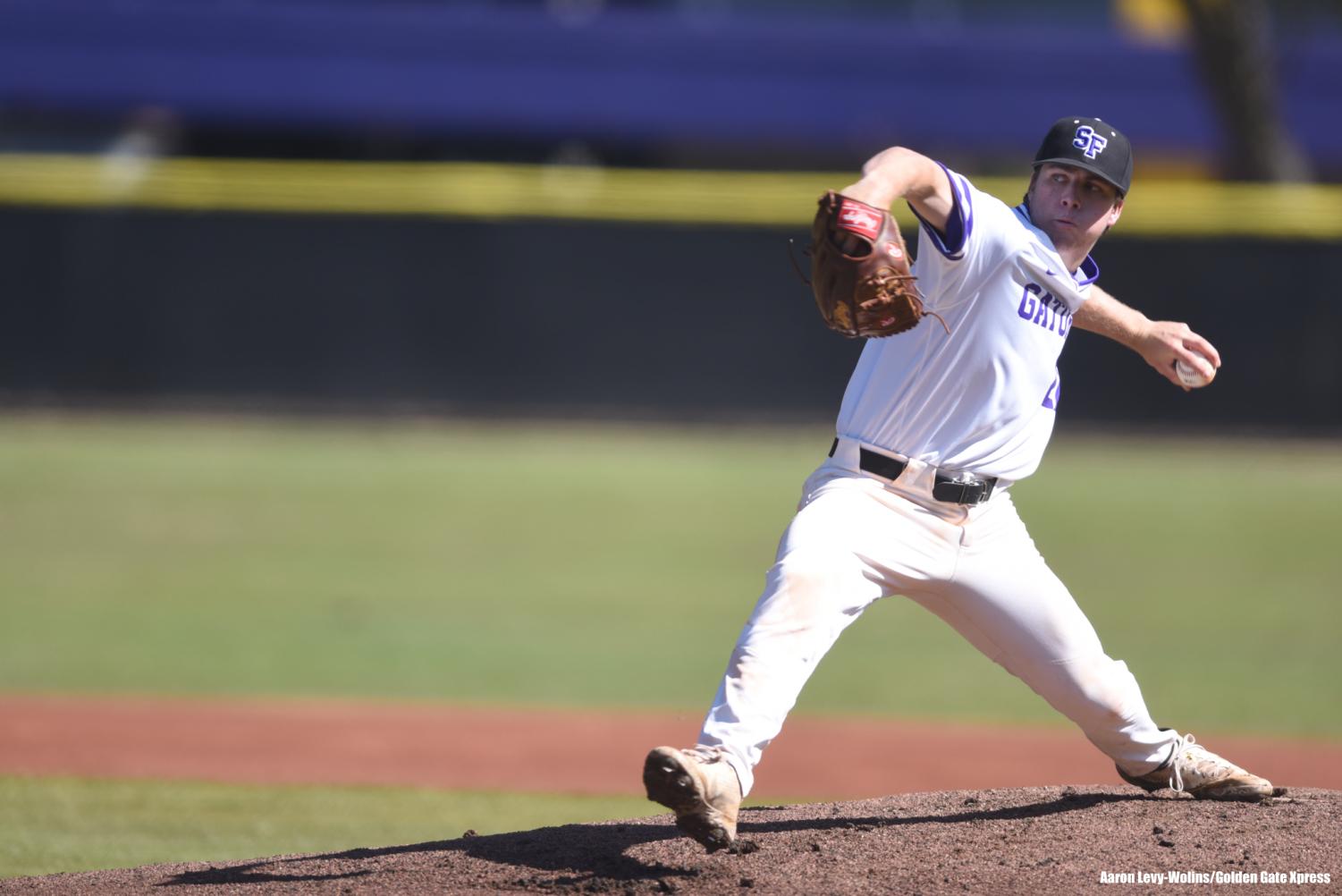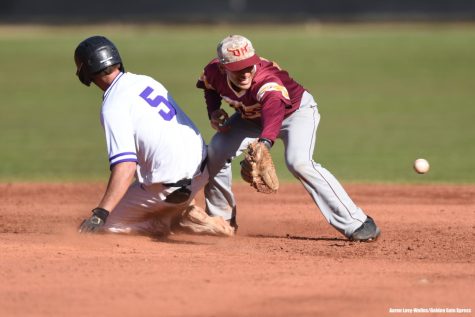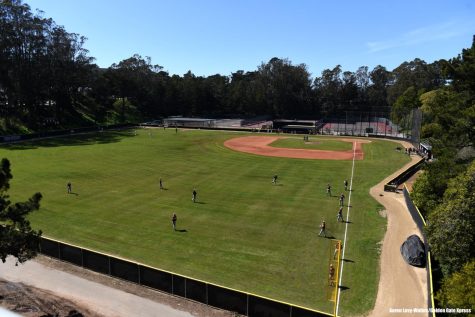



The rule changes in place for the 2023 MLB season include a pitcher and hitter clock, larger bases, banning of the defensive shift and a pickoff attempt limit, while Division II baseball has the pitch clock.
Apr 5, 2023
The MLB and NCAA have begun enforcing new rule changes for the 2023 baseball season, which have a major impact on the way the game is played. Generally, traditionalists argue the changes are bad, while others welcome the new rules.
Among the rules is a pitch clock, banning of the defensive shift, larger bases and a limit in pickoff attempts. The pitch clock is the only rule applied to NCAA baseball so far, which the Gators have been adjusting to during the season. For the first time, players have been timed during every at-bat, both on the mound and at the plate.
The rule states that a pitcher has 20 seconds to throw a pitch, or else the batter will be awarded a ball to the count. On the opposing side, a batter also has 20 seconds between pitches to be ready in the batter’s box, otherwise, a strike will be called.

Within the game of baseball, rules that change the speed of the game garner controversy. While the Gators are in agreement that a speedier game is a positive for spectators, the new pace of play has been a challenge to adjust to for players. Gators senior pitcher Jordyn Eglite dislikes the new rule due to the lack of time for strategizing each pitch.
“It changes a little bit of your routine,” Eglite said. “The fact that you get the ball back, and instead of taking your time and re-gathering your thoughts walking around the mound, you kinda have to flip that switch fairly quickly and move on to the next pitch and be able to do that in a two, three second period.”
A challenge faced by pitchers and batters is not being able to track the time left before receiving a violation. Due to the rule being in its first season of use, many teams do not yet have a visible clock on the field, so umpires use a stopwatch to keep track of the seconds. Per the rule, Division II teams have until Jan. 1, 2025 to add a visible clock to their stadiums.
Head baseball coach Tony Schifano said it has been a smooth transition outside of not having a visible clock. He likes the faster pace of play, which was the inspiration behind the rule change. During the MLB’s first four days of the season, games were an average of 30 minutes faster than last season, although the sample size of data is just through Sunday’s action.
“I think it’s made games more crisp,” said Schifano. “It’s knocked time off games, which is fantastic, I think, for everybody involved. It’s killed a lot of downtime. I think it’s had a positive impact on the game, honestly.”
Another change at the MLB level that has a big impact on the strategy of the game is the banning of the shift. The shift was a defensive strategy that exploded in popularity among MLB teams during the 2010’s.

“I think it creates a little bit more of an even playing field. It puts every hitter on the same level, as far as respect goes and the fact of each of them having to earn their hits equally,” said Gators redshirt sophomore pitcher Garrett Jensen. “As far as entertainment point of view, I don’t think anybody likes seeing a big lefty that can hit home runs come up to the plate, everybody shifted to the right, and he tries to bunt up third baseline or something.”
The rule most questioned by the Gators was the pickoff rule applied to MLB. This rule states that pitchers are limited to two pickoff attempts per at-bat, which was designed to aid in the pace of play. According to the Gators, the new rule interferes with the strategy of the game. Additionally, after two pickoff moves, the runner knows the pitcher can’t throw at them again, prompting an easier stolen base attempt.
Despite this rule seemingly making things more difficult on pitchers, Eglite likes it, as it helps him focus on the batter. His coach, as well as Jensen, are not fans of the rule.
“It’s definitely the most complex, confusing and, in my opinion, almost unnecessary rule,” Jensen said. “It completely changes the dynamic of the game. Pickoffs are something that should be very unique in the sport. We know the base runners and you’d like to think that they know the pitchers and their pickoff moves. That’s something we work on pretty religiously throughout the fall and even throughout the season to try to be as effective as possible [with] our timing to the plate.”
The last rule in play for the 2023 MLB season is an increase in base sizes. They have increased by three inches in diameter after being 15 inches since 1875. The change is ideally going to reduce injuries and increase stolen bases.
“I really like expanding the base size,” said sophomore outfielder Nick Upstill. “Not even just from a hitter’s view, getting more base hits we love that. But I think from an injury standpoint, it’s going to avoid a lot more injuries. A lot more times where first baseman or second baseman might get cleated. I think that’s something that’s also really good for the game.”

